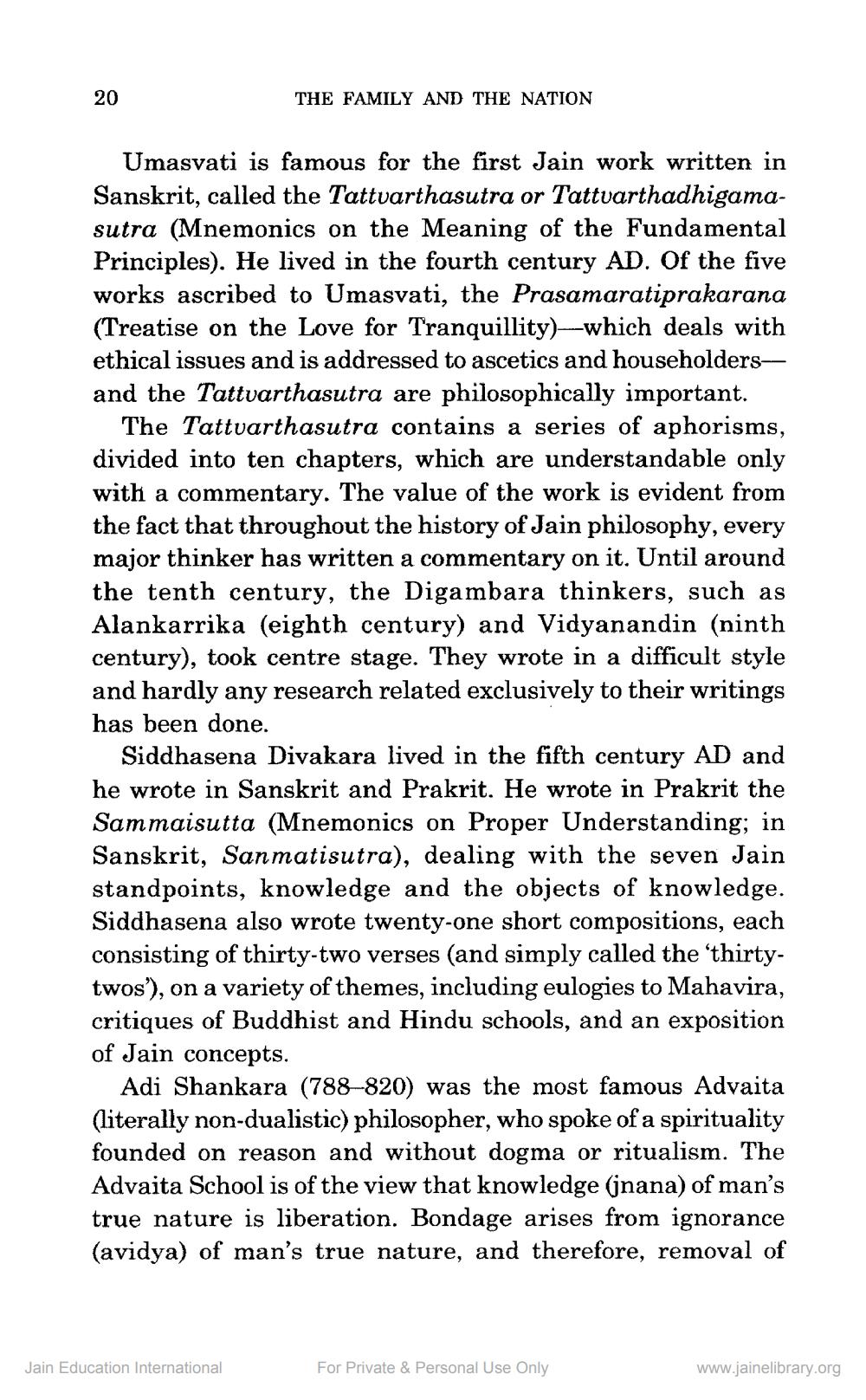________________
20
THE FAMILY AND THE NATION
Umasvati is famous for the first Jain work written in Sanskrit, called the Tattvarthasutra or Tattvarthadhigamasutra (Mnemonics on the Meaning of the Fundamental Principles). He lived in the fourth century AD. Of the five works ascribed to Umasvati, the Prasamaratiprakarana (Treatise on the Love for Tranquillity)—which deals with ethical issues and is addressed to ascetics and householdersand the Tattvarthasutra are philosophically important.
The Tattvarthasutra contains a series of aphorisms, divided into ten chapters, which are understandable only with a commentary. The value of the work is evident from the fact that throughout the history of Jain philosophy, every major thinker has written a commentary on it. Until around the tenth century, the Digambara thinkers, such as Alankarrika (eighth century) and Vidyanandin (ninth century), took centre stage. They wrote in a difficult style and hardly any research related exclusively to their writings has been done.
Siddhasena Divakara lived in the fifth century AD and he wrote in Sanskrit and Prakrit. He wrote in Prakrit the Sammaisutta (Mnemonics on Proper Understanding; in Sanskrit, Sanmatisutra), dealing with the seven Jain standpoints, knowledge and the objects of knowledge. Siddhasena also wrote twenty-one short compositions, each consisting of thirty-two verses (and simply called the 'thirtytwos'), on a variety of themes, including eulogies to Mahavira, critiques of Buddhist and Hindu schools, and an exposition of Jain concepts.
Adi Shankara (788–820) was the most famous Advaita (literally non-dualistic) philosopher, who spoke of a spirituality founded on reason and without dogma or ritualism. The Advaita School is of the view that knowledge (jnana) of man's true nature is liberation. Bondage arises from ignorance (avidya) of man's true nature, and therefore, removal of
Jain Education International
For Private & Personal Use Only
www.jainelibrary.org




